Over one unforgettable summer in an idyllic Italian town, a deep and unshakable bond forms between two lads coming to terms with their identities. It’s a moving coming-of-age tale that doubles as an Italian tourism PSA—complete with stunning landscapes, mouth-watering food, and crystal-clear waters. Of course, I’m referring to Pixar’s latest film, Luca, streaming on Disney+ as of Friday.
While Luca is very much in Pixar’s wheelhouse, it’s drawn extra attention because of its many similarities to Call Me by Your Name, another film about male companionship during a picturesque Italian summer—though what happens to a peach in that project isn’t exactly kid-friendly. Still, Luca’s parallels to the 2017 coming-of-age drama, which just so happened to be directed by an Italian filmmaker whose first name is Luca, were noticeable enough that it became a trending topic on Twitter when Luca’s teaser dropped in February. Luca director Enrico Casarosa has since stressed in interviews that it’s not an apt comparison because his film is about childhood friendship rather than romance. (As if anyone expected Italian tweens to passionately make out in an animated movie from the same studio that brought us Cars.)
So yes, Luca isn’t a complete retread of Luca Guadagnino’s Call Me by Your Name. But the shared qualities of both films—their vibes, if you will—remain undeniable. The internet picked up on it for a reason, and Luca’s director wouldn’t be asked about it otherwise. In that spirit, we’re going to determine whether Luca has earned the distinction of being a PG-rated riff on Call Me by Your Name. We’ll break down how similar the movies are using categories and a highly scientific, state-of-the-art Peach Rating System™ from 0 to 5—with 5 being the highest and most obvious cinematic parallels. Spoilers ahead.
The Setting
Naturally, one of the basic elements that both movies have in common is that they’re set in Italy, and whether the scenes are animated or live action, they’re still #VacationGoals. But not all Italian towns are created equal. Luca takes place in Portorosso, a fictional slice of heaven lying in the real and enviously gorgeous Italian Riviera. (The name of the town is a nod to the Studio Ghibli classic Porco Rosso.) Portorosso leads right up to the water, and if it were a real location, it would be overrun with tourists taking selfies on the shoreline:

Meanwhile, most of Call Me by Your Name was filmed in Crema, a city in the Cremona province that’s close to Milan. The important thing to know here is that Crema is inland—it would take roughly two hours by car to get to the Ligurian Sea. You could theoretically set Call Me by Your Name in Portorosso if it were a real town, but the same can’t be said for Luca and Crema ... because the Pixar movie’s lead characters are adorable sea monsters who turn into humans on land. (Being near the sea is kind of their whole deal.) Unless there’s a director’s cut out there collecting dust in which Elio and Oliver transform into mermen—side note: would watch—that’s not quite the case with Call Me by Your Name.
Peach Rating: 1
The Protagonist
Elio was a star-making role for Timothée Chalamet, who’s already been called his generation’s Leonardo DiCaprio, and it’s to his credit that the character’s eccentricities are so likable. After all, Elio is the sort of dude whose idea of humor is playing Bach in the style of different composers, and who dances like a spindly bird learning to leave its mother’s nest. But man, when Elio is moping in front of a fireplace? All you want to do is cover him in a blanket and tell him everything will be all right:
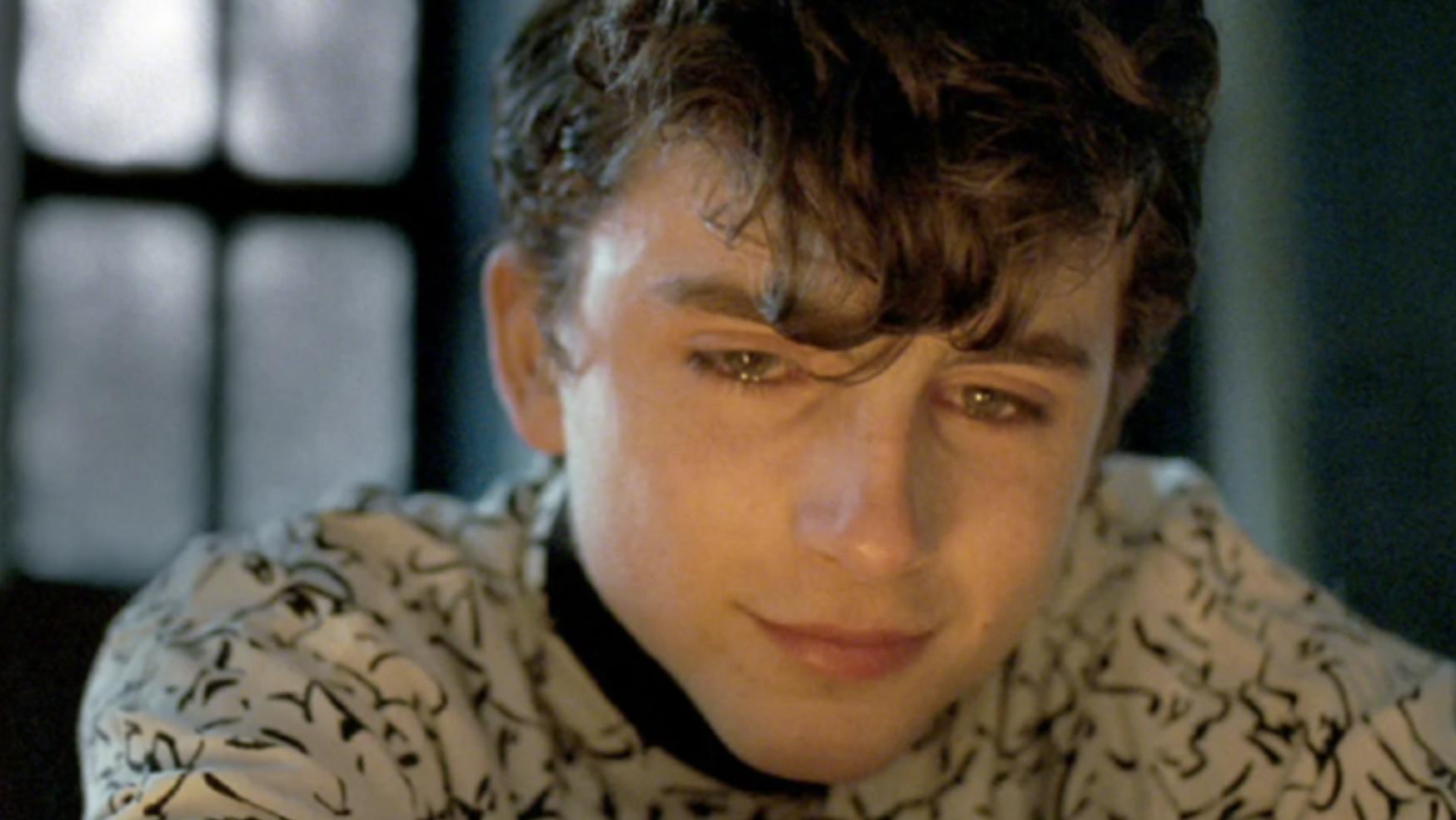
The eponymous Luca of the Pixar film isn’t quite like Elio: For starters, he’s from the ocean and absolutely doesn’t have a clue who Bach is. (The horror!) In fact, Luca’s sheltered, underwater upbringing means that he’s learning a lot of things on land for the first time, including what stars are made of. (To his surprise, it has nothing to do with fish.) Being in Portorosso is a true—I’m sorry—fish-out-of-water experience. But while Luca and Elio might not have a lot of shared interests, they certainly look alike:
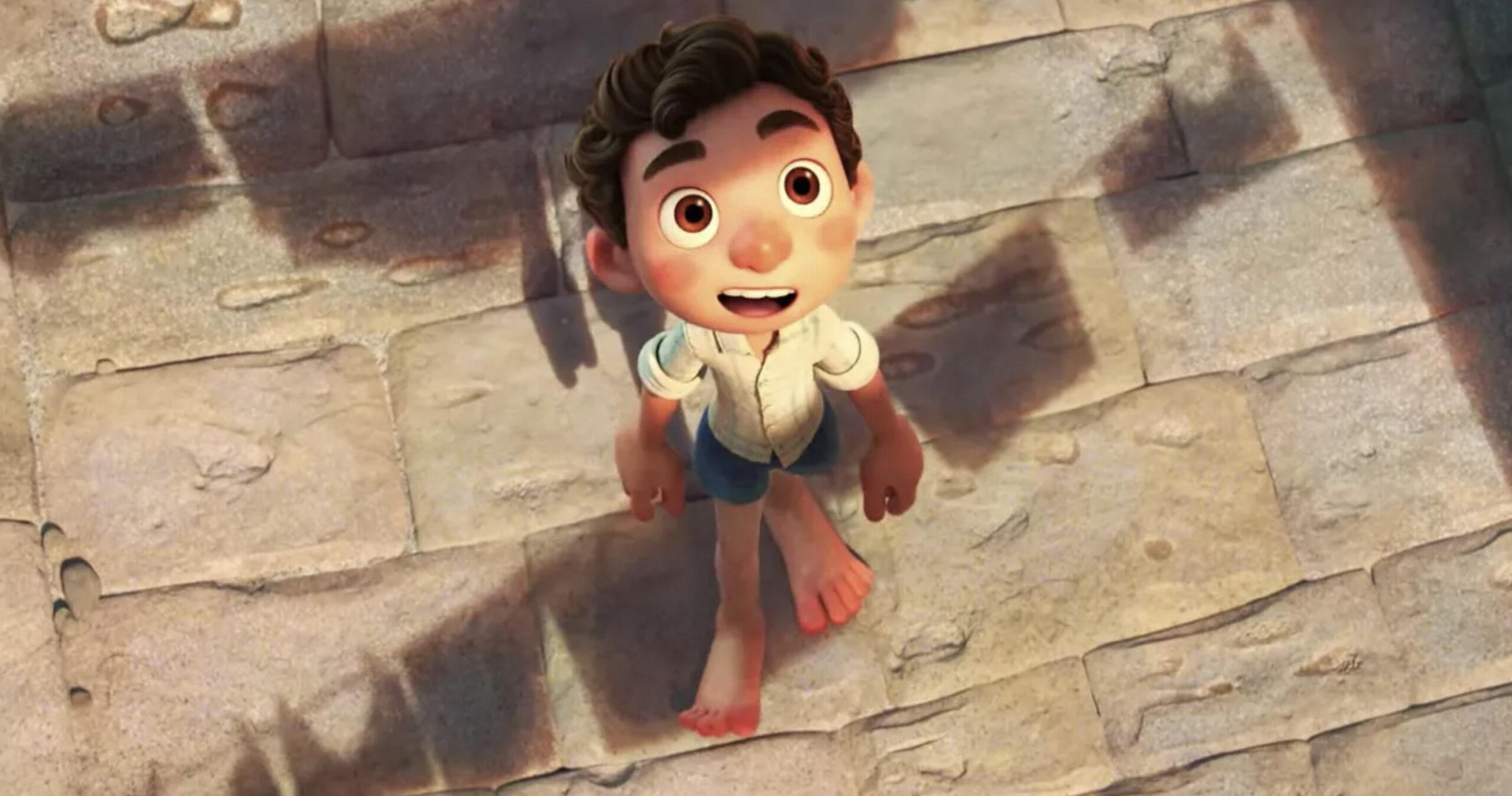
Tell me this isn’t an artist’s imagining of Tween-othée Chalamet.
Peach Rating: 3
The Voice Cast
This should be pretty straightforward: Neither Chalamet nor his disgraced Call Me by Your Name costar, Armie Hammer, are part of Luca’s voice cast. But the film does employ Jack Dylan Grazer to voice Alberto, Luca’s adventurous and extroverted sea monster pal who introduces him to the wonders of the surface world. (Luca is voiced by current Boy King of Hollywood Jacob Tremblay.) And while Grazer wasn’t involved in Call Me by Your Name, he was the star of Guadagnino’s 2020 HBO series We Are Who We Are, a coming-of-age tale set on an American military base in—you guessed it—Italy.
Other than Grazer, there might not be a direct correlation between Call Me by Your Name and Luca—aside from, again, the filmmaker who shares a first name with the Pixar movie. But there aren’t that many degrees of separation, either.
Peach Rating: 2
The Fondness for Water
As one would expect from a movie starring sea monsters, the ocean is an essential component of Luca. Most of Portorosso’s citizens make their living by fishing, and the town has an acrimonious history with the fabled creatures supposedly residing offshore. Luca and Alberto are understandably wary of revealing themselves to the townsfolk, though who in their right mind would want to harpoon something so adorable?
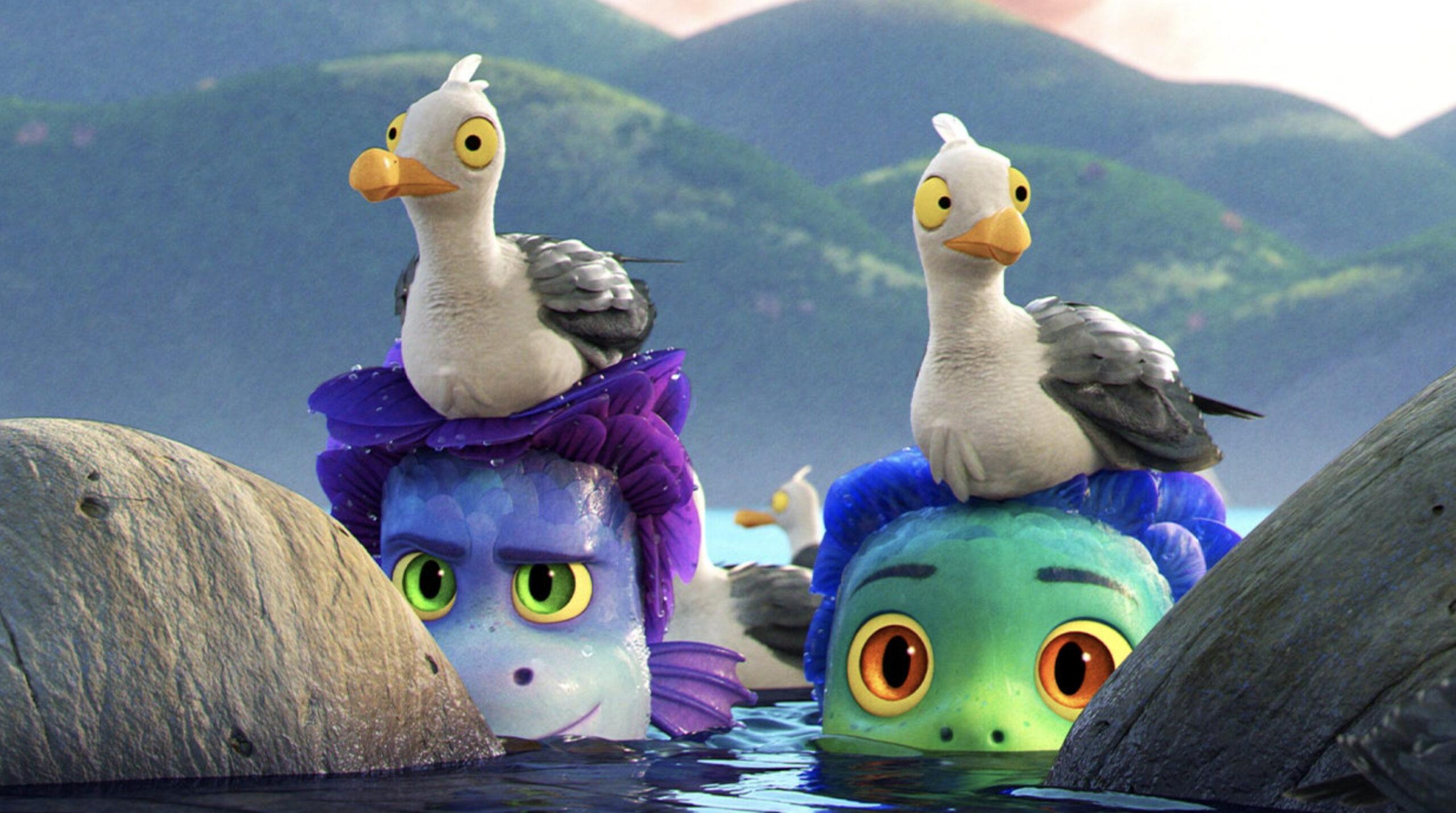
Luca, therefore, would seem to have a leg up on Call Me by Your Name in all aquatic matters. But what Guadagnino’s film lacks in literal sea creatures it more than makes up for with several scenes in which characters spend time in water:
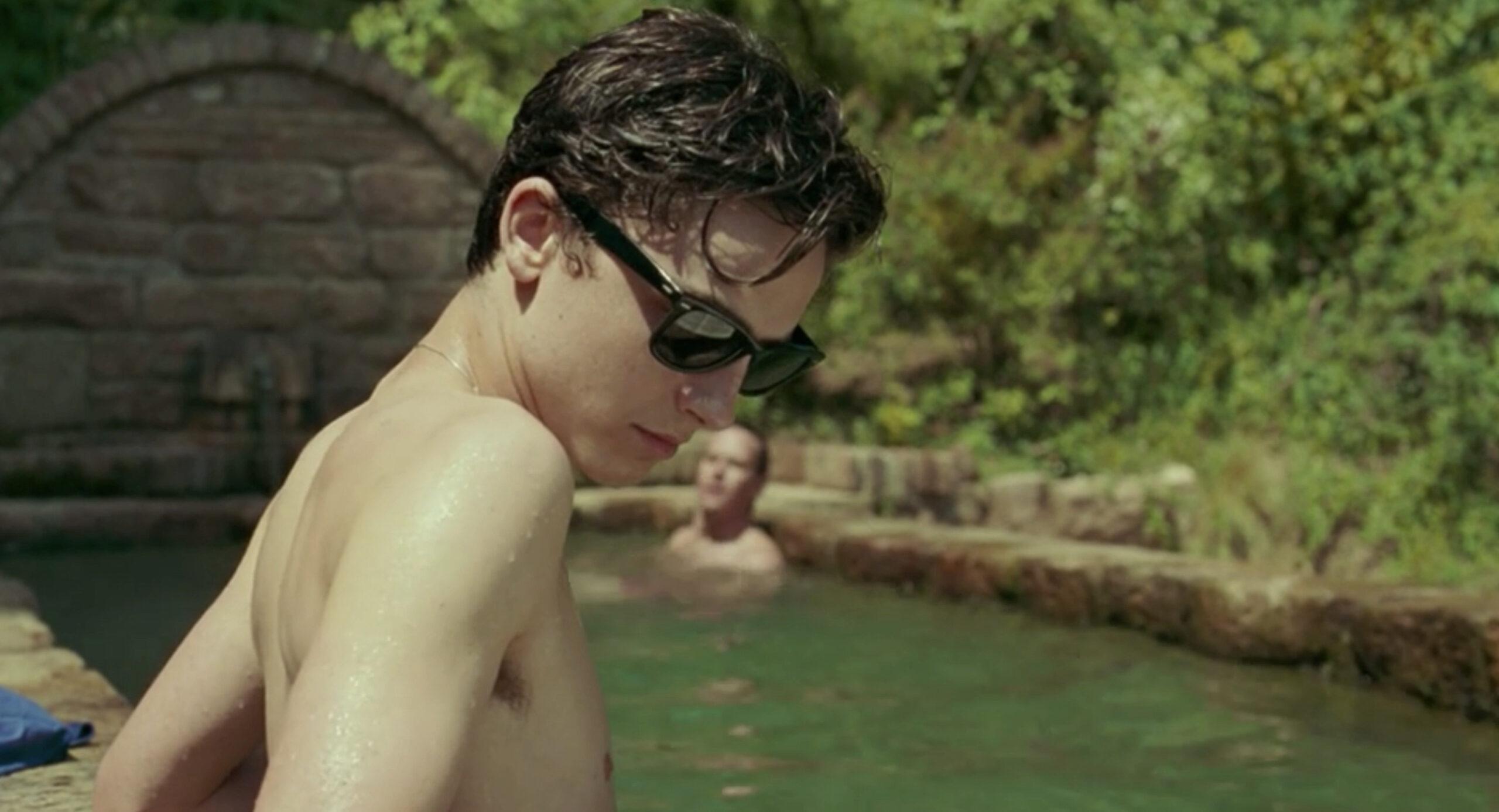
Seriously, there are so many water-adjacent moments in this movie:
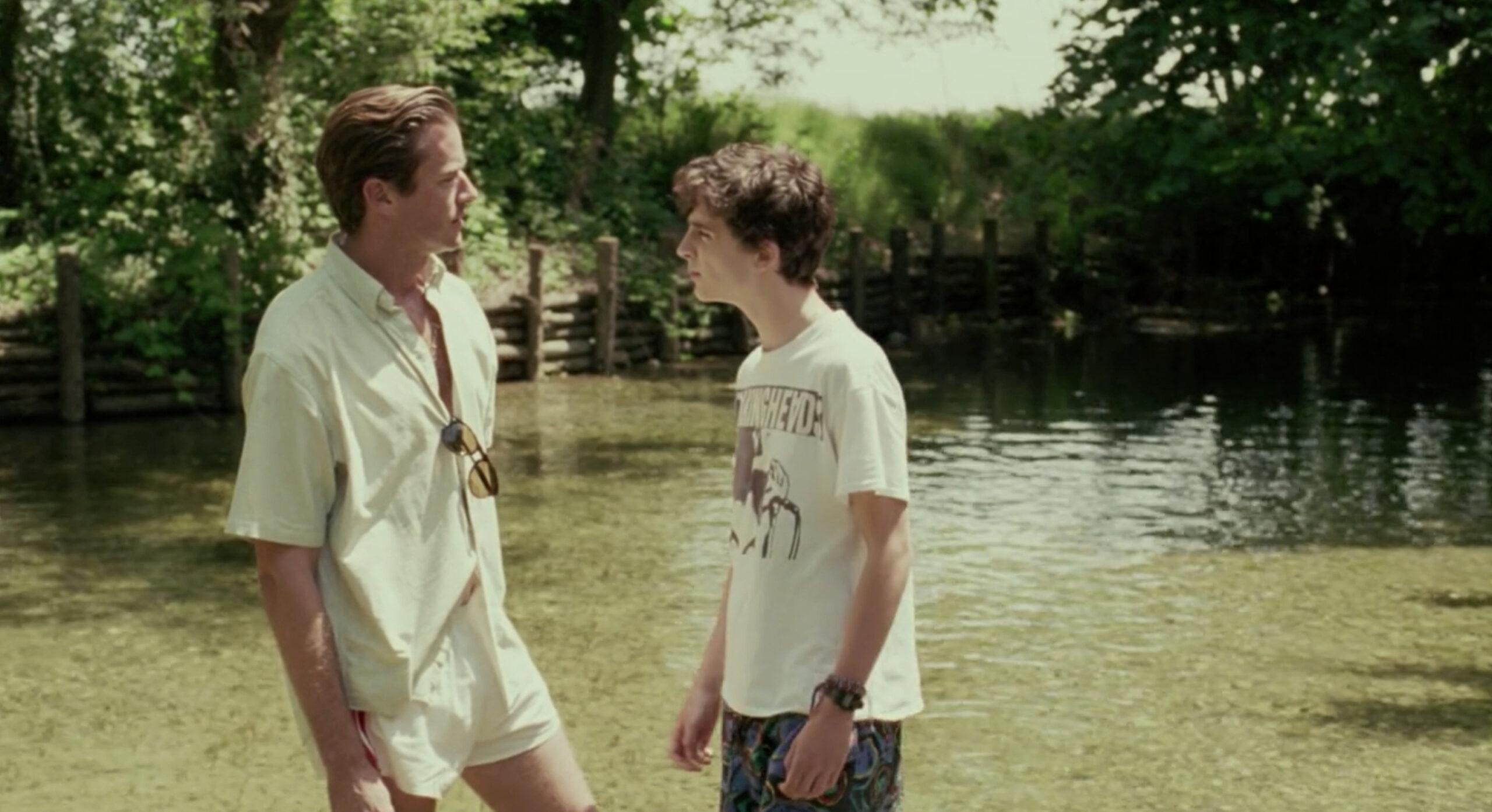
I’m pruning up just thinking about it:
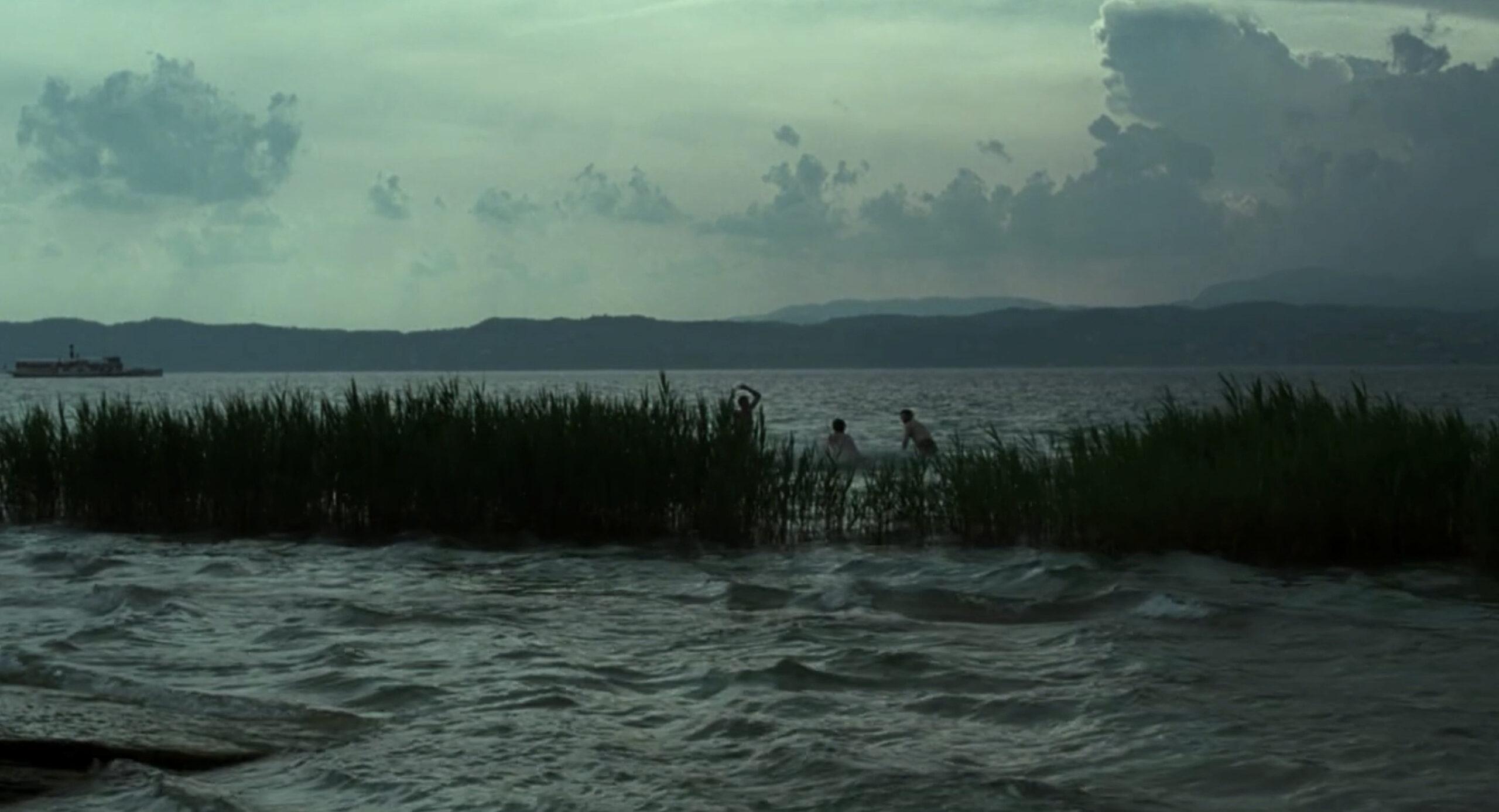
But wait, there’s more!
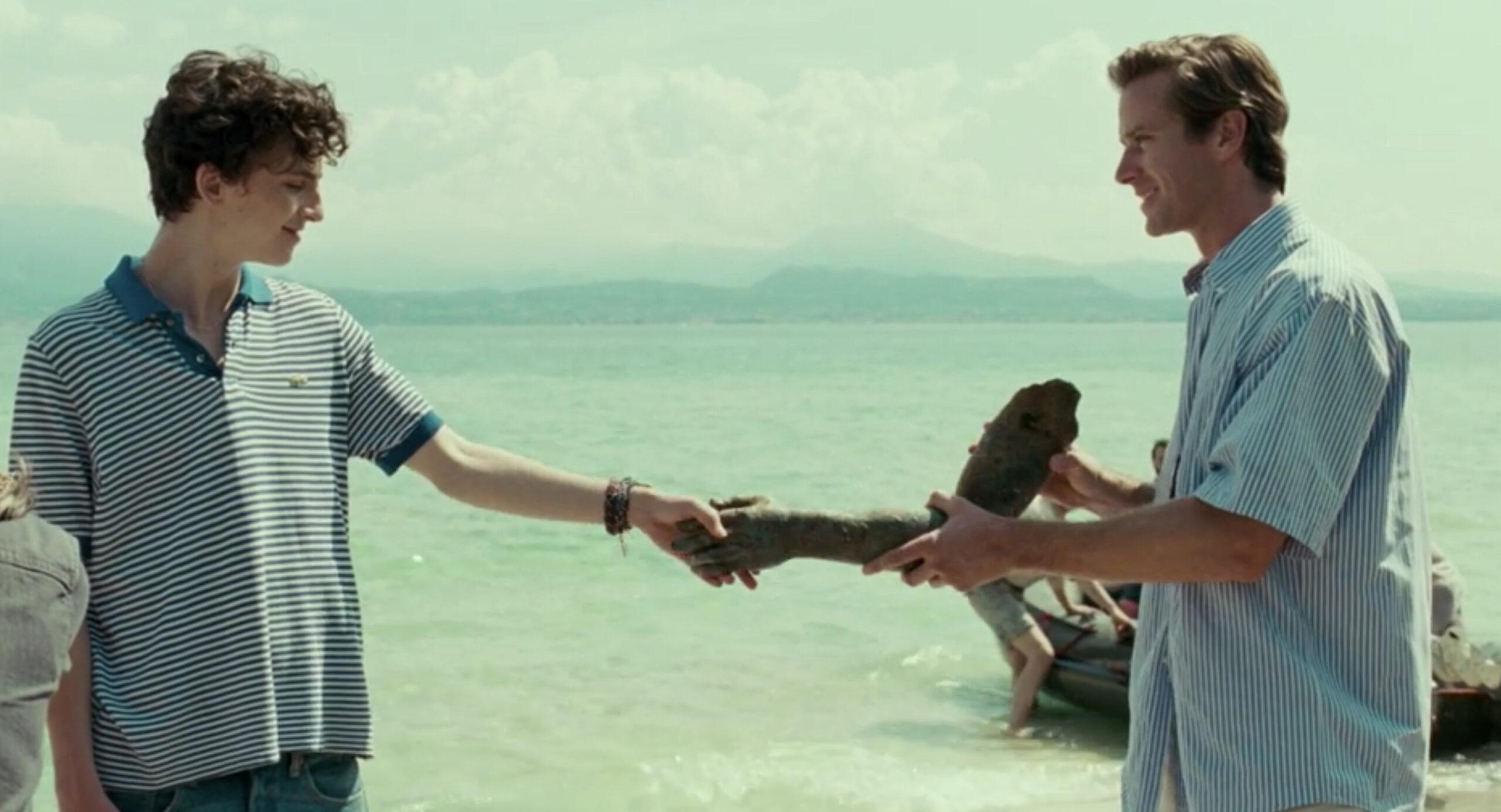
In this respect, the films are essentially polar opposites: Luca is about water-based creatures trying to spend as much time as possible on land, while Call Me by Your Name is about a couple of regular ol’ humans spending a ridiculous amount of time in water. The sea monster movie just got beat on its home turf.
Peach Rating: 2
The Preferred Mode of Transportation
One of the simple pleasures of Call Me by Your Name is watching the characters travel to different sumptuous locations on their bikes. (Guadagnino so effectively captures the feeling of wanderlust that it should come as no surprise that the filmmaker has worked on a short film for a luxury hotel chain; game recognize game.) Other than the central romance and the, uh, peach, the picturesque bike rides might the most defining characteristic of the movie:
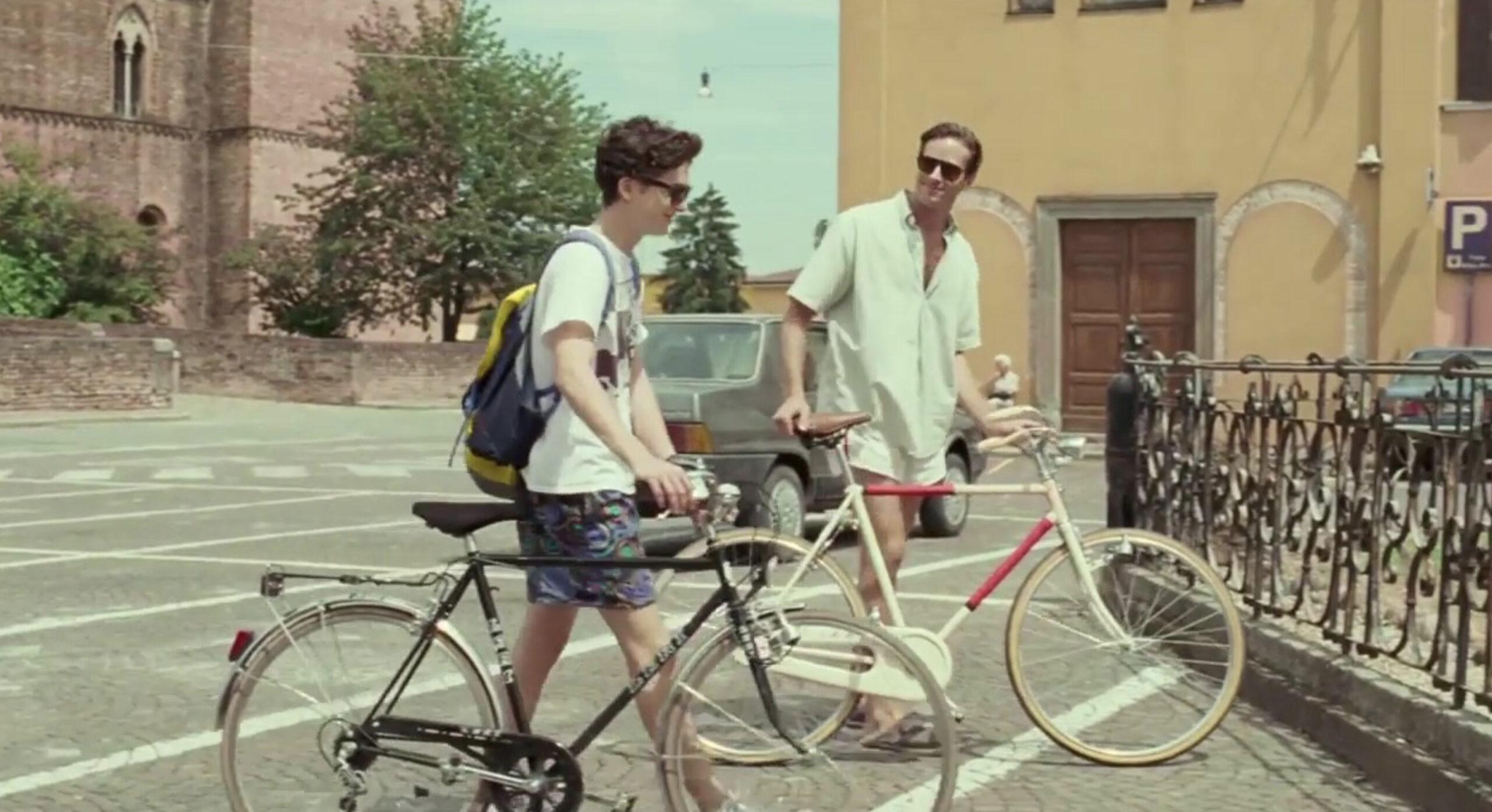
On the surface, this is where Luca should diverge from Call Me by Your Name—instead, it’s the most compelling evidence that Pixar ought to send the other Luca a royalty check. You see, Luca and Alberto have one goal for their summer on land: getting a Vespa. (They are Italian sea creatures, after all.) And the best way to do that is by competing in the Portorosso Cup, an annual children’s competition in the town that combines swimming, competitive eating (pasta, naturally), and biking. The winner gets enough money to, if they so choose, buy a used Vespa.
Luca and Alberto team up with Giulia, a local girl unaware of their real identities. And since Luca is in charge of the biking component of the competition, he spends a decent amount of time getting in a workout on the pedals:
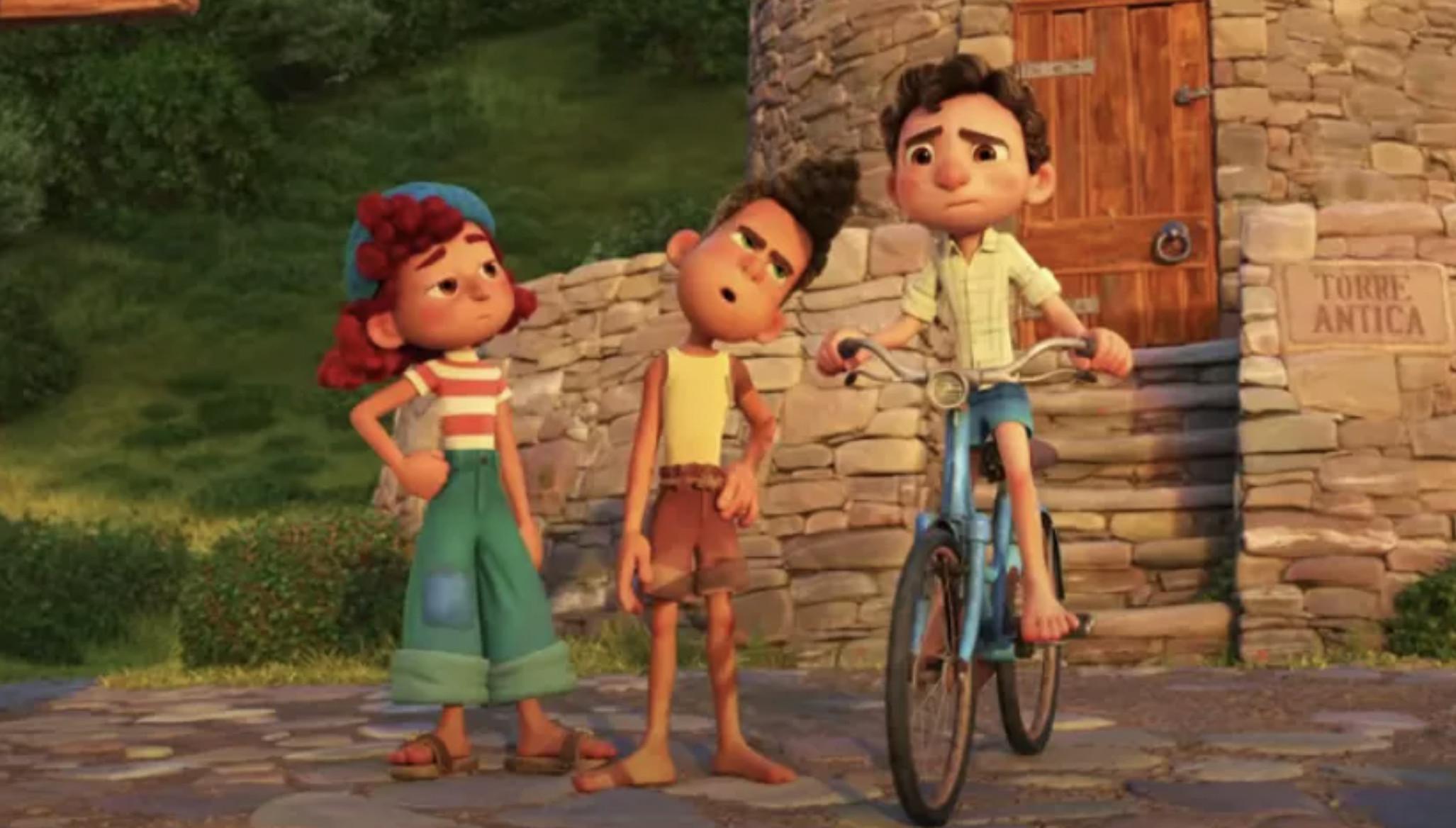
Pixar Luca and Italian filmmaker Luca love bikes an equal amount, which is to say: a lot. You really can’t make this up.
Peach Rating: 5
The Soundtrack
Unfortunately, no: There aren’t any moody Sufjan Stevens songs on the Luca soundtrack.
Peach Rating: 0
The Thoughtful Paternal Presence
The single best scene in Call Me by Your Name happens toward the end of the film, as Elio grieves over Oliver’s return to the United States. Elio’s father, Samuel, played by Michael Stuhlbarg, sits his son down and consoles him over the loss with an empathetic monologue where he talks about having a similar experience in his youth. (It’s inferred, though not explicitly stated, that Samuel was coming out to Elio while accepting his son’s sexuality.) It’s an incredible acting showcase from Stuhlbarg, the kind of moment that’s Oscar-worthy in a vacuum.
Now, had Luca essentially re-created the Michael Stuhlbarg monologue, we might have a lawsuit on our hands. Thankfully, the Pixar film doesn’t exactly touch that territory, but there is a warm undercurrent of love and acceptance when—major spoiler alert—the townsfolk discover that Luca and Alberto are sea monsters. Portorosso’s citizens are conditioned to fear the fabled creatures; you fear the worst for them when they’re exposed. But the first person to come to their defense is Massimo, Giulia’s father, who also happens to be the most badass fisherman in town. Massimo is so burly that his eyebrows cover his eyes, and he’s so authentically Italian that even his grumpy cat has a matching mustache.
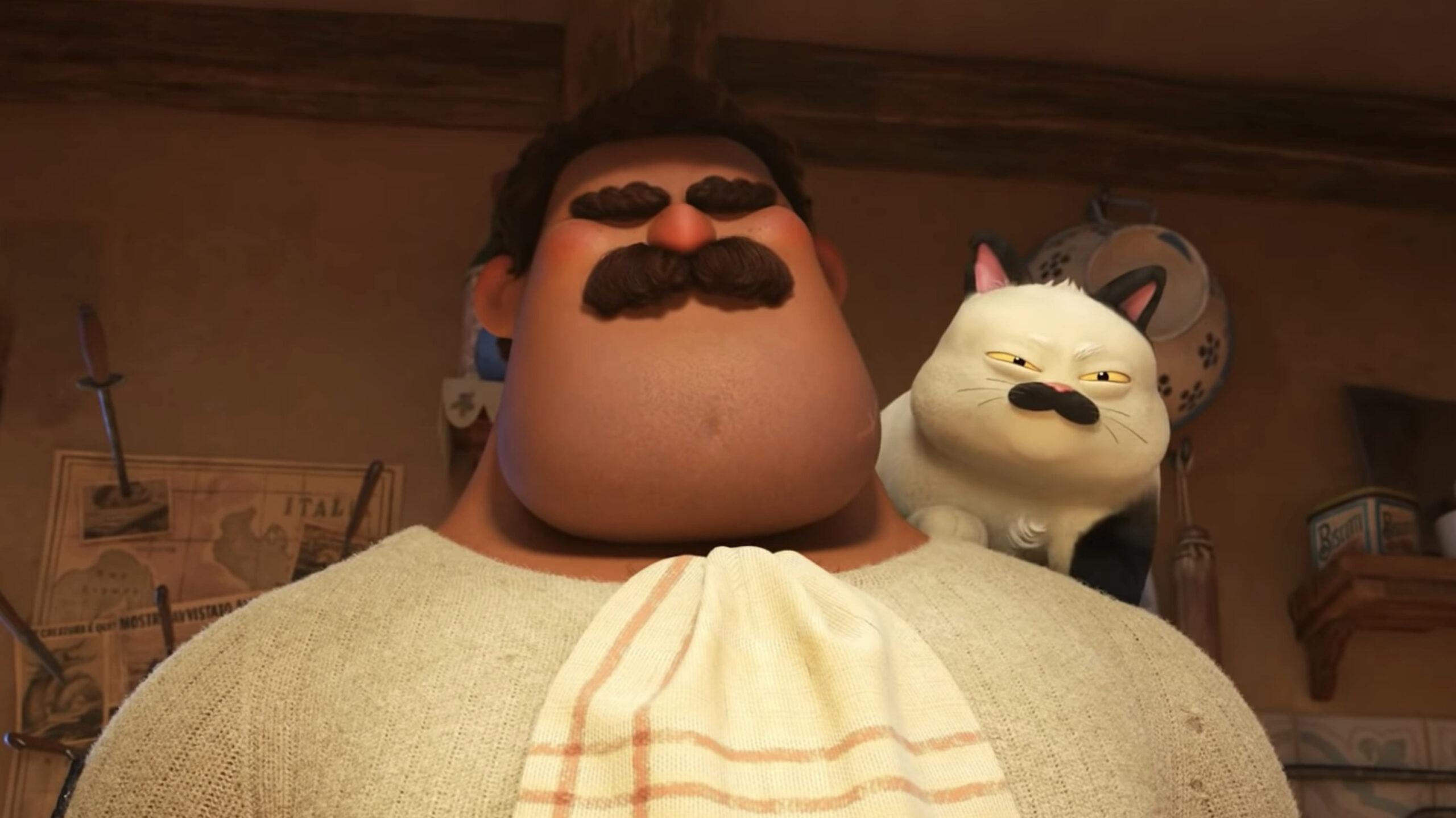
Anyway, Massimo vouches for the boys, having spent much of the summer feeding them really delicious computer-animated pasta in his home. He is a man of few words, but those words and his touching paternal presence carry a lot of weight. Samuel and Massimo can hang, and the latter deserves a spot in the Hot Animated Dad Hall of Fame.
Peach Rating: 4
The Platonic (?) Relationship
The Elio-Oliver relationship speaks for itself; the friendship at the heart of Luca is a little more complicated. To be clear: This is a Pixar movie—leave the impure thoughts at the door. This is more about the not-so-subtle subtext of Luca and Alberto wanting to hide their true identities for fear of being different, which critics have noted has shades of being a gay allegory. This would be very reasonable territory from a studio that routinely packs existential adult themes into stories palatable for children.
Along with denying that there is any romantic underpinning between the sea monsters—though it must be noted: Alberto gets really jealous when Luca bonds with Giulia—Casarosa has insisted that Luca takes place in a “pre-puberty” world and that sexuality isn’t even in the picture. But even Pixar’s chief creative officer, Pete Docter, has leaned into the deeper meaning behind the movie’s message. “It does become this metaphor for the other, and everyone can be specific about how it relates to them,” he told IndieWire.
Peach Rating: 3
The similarities between Luca and Call Me by Your Name are undeniable, but those shared vibes aren’t disqualifying for the former. If anything, being compared to one of the best films of 2017 favors Luca, which still has plenty of distinctive characteristics to stand apart and be celebrated on its own. The movie is an interesting tonal departure for Pixar—less for being Call Me by Your Name–esque and more for having a low-stakes, carefree spirit that evokes Studio Ghibli. Hopefully, in the future, more Pixar films will be as light and breezy as Luca; I don’t need Bing Bong PTSD every time I turn on a kids movie.
If there is one thing Luca could’ve changed, well, perhaps the Call Me by Your Name parallels would’ve been less pronounced if it weren’t named after the movie’s director. There’s nothing wrong with “Luca,” but we’ve got plenty of fun Italian names that could’ve worked. For example: Gianluigi, Alessandro, Leonardo, Giorgio, Nicolò, Jorginho, Manuel, Lorenzo, Domenico, or Ciro, and that’s going off the Italian national team’s starting lineup in the opening match of Euro 2020.
Final Peach Rating: 20 out of 40 peaches.
